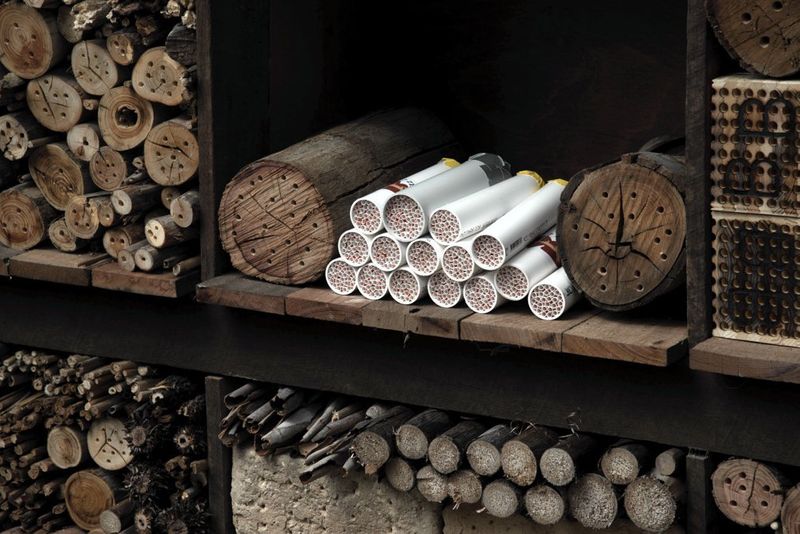Native bees
Australia has more than 1600 native bee species, many of which make their homes in the Gardens.
Most of the bees you will see in the Gardens are European honey bees (Apis mellifera). This species was introduced to Australia in 1822 to produce honey.
However, the Gardens are also home to many species of Australian native bees. Native bees are divided into three types: solitary bees, semi-social bees and social stingless bees. Most native bees are solitary or semi-social, although there are a handful of social species that produce honey.
Solitary bees usually nest in soil or wood burrows or in isolated cells made from resin or mud. Females nest alone, stocking the cell with pollen and honey and laying an egg in the cell. Solitary bees vary in size, shape and colour, and most of them can sting.
Our native bee hotel

You can watch native bees at work in the Gardens’ bee hotel – a specially built structure made from timber and other bee-friendly materials. The hotel has different-sized tubes and hollows to encourage a wide variety of native bee species to nest in the ‘rooms’.
The native bee hotel is located near the Rock Garden.

